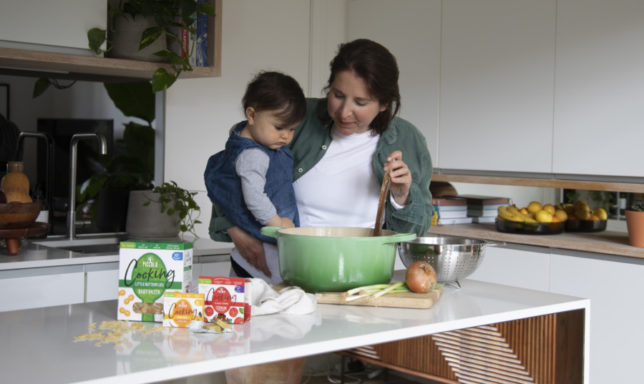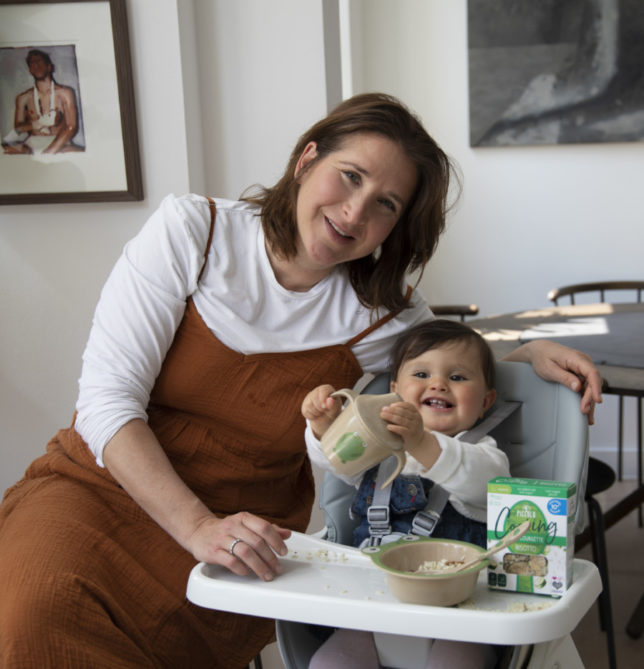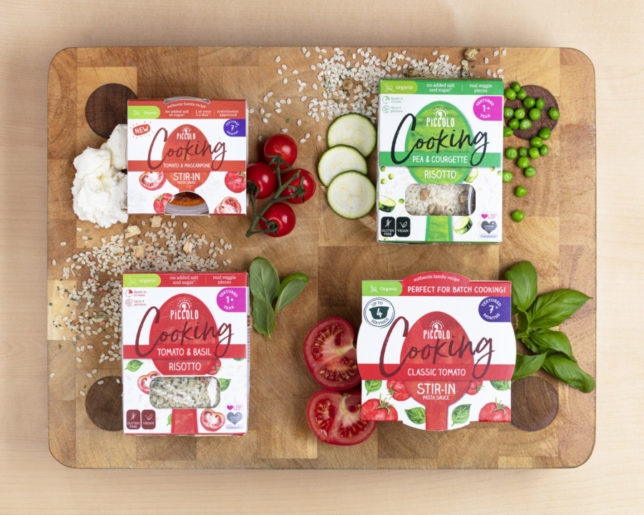By Alice Fotheringham, infant nutritionist and co-founder of baby food brand, Piccolo Foods.
Introducing solid foods to your baby can be both exciting and daunting, particularly if you have a fussy eater. Due to the ranging advice and opinions out there on how to build a positive relationship with food for your little one, it can be hard to discern which path is best. It often feels like the information on supporting growth and development with food changes daily, so don’t be disheartened if challenges arise. I hope to answer the questions I hear most frequently to help you navigate the exciting, messy (and at times frustrating!!) stage of introducing solid foods to your baby.

During your baby’s weaning journey, it’s very easy to stick to what you know. As most babies often start with pureed food, transitioning to chunkier textures and more developed flavours can be pretty difficult at times. Moving to new textures comes with its challenge – for example, it’s common for little ones to become adjusted to pureed textures and subsequently not respond well to new chunkier foods. But don’t be disheartened! Much like adults, babies can be very sensitive to new textures, especially seeing as they don’t have much experience to associate them with. This takes time and normally a few attempts!

The combination of a fussy eater and introducing chunkier textures is no small feat. Fussiness with food often stems from a lack of familiarity and experience. You can develop this through more than just feeding, as babies rely heavily on touch. It’s important to learn what food feels like in the hand as it’s a great way to advance your little one’s pincer grip (closing the thumb and index finger together to hold an object) and hand-eye coordination. Furthermore, the sight, sound and feel of food can help to build a positive reaction. Whether it be a crunch or a squeak, or even the kinaesthetic movement, the physical properties of foods are a large part of why we enjoy some and not others.
It’s key to keep trying lots of different textures. Don’t stick with pureed food just because a few textures haven’t worked yet – be persistent and switch it up with different toppings or flavourings!

In a recent survey conducted by myself and the Piccolo team, we found a direct correlation between the time spent working on relationships with food, and the likelihood of babies being fussy eaters. The research showed that 4% of UK parents labelled their children as fussy eaters in 2021 compared to 94% in 2018. In fact, it found that UK children are set to be connoisseurs of the future as taste palates have become more refined. As 56% of parents stated they had spent more time preparing meals and working on eating habits during lockdown, it’s clear that time and patience is key to a healthy progression with textures and flavours. Out of the parents surveyed, 86% said they will continue to spend more time cooking for their family, as it has taken away the stress about their little one’s fussy eating habits.

Our research also highlighted that pasta is the current favourite household dish across the UK, with 86% of parents revealing Spaghetti Bolognese as the preferred flavour. Pasta is a great way to tackle fussy eating when it comes to texture, as it’s quite bland in flavour when served alone. With bland tasting food like pasta, you can use it to your advantage and serve with flavours you know your little one enjoys already. This is a great way to try different textures, as it eliminates the question of flavour. As a result, you can figure out what it is about the texture that isn’t working for your baby.

Through my years as an infant nutritionist, I have found that babies are often great mimics. As families are spending more time together at mealtimes, seeing others eating the same thing has a huge impact. After all, babies often do as we do rather than what we say! Seeing the rest of the family eating a certain food helps to develop their taste buds and relationships with textures, as they’re unconsciously influenced by those around them. Babies also thrive off having a routine. By having meals at home, you can build more of a routine around mealtimes. Making mealtimes a more relaxed affair gives babies the time to explore the texture of what is put in front of them. This can be a lot messier for you, but it’s a great way for them to have more fun and subsequently enjoy the food more.

In our survey, when asked what they worry most about when feeding their baby new textures, 63% of parents said choking. Piccolo’s cooking range, designed specifically for babies and toddlers, aims to support parents throughout their little ones’ feeding journey by giving them all the tools necessary to relieve stress at mealtimes. Our baby pasta, which comes in star, butterfly and shell shapes, is a great choice for parents with this concern as they’re tailored to babies and toddlers and so the perfect size for them to eat and easily digest. The range also features organic stock cubes and sachets, stir-in sauce pots like Beef Bolognese and Classic Tomato. Seven new products are also launching this month with brand new stir-in sauce flavours and sizes to cater for different cooking occasions and flavoured risottos. Designed to make cooking at home that little bit easier, the products are packed full of nutritious, organic ingredients that contain no added salt, sugar, or palm oil to reassure parents at mealtimes.
About the expert
 Alice Fotheringham is an infant nutritionist and co-founder of baby food brand, Piccolo Foods. Piccolo Organic makes healthy (and very tasty) baby meals, cooking products and snacks to help you get the balance right every day. The brand is partnered with City Harvest and Little Village, and gives 10% of its profits to charity. Available in all major retailers and its online store, as individual bundles and its new, personalised subscription service. Learn more at www.mylittlepiccolo.com
Alice Fotheringham is an infant nutritionist and co-founder of baby food brand, Piccolo Foods. Piccolo Organic makes healthy (and very tasty) baby meals, cooking products and snacks to help you get the balance right every day. The brand is partnered with City Harvest and Little Village, and gives 10% of its profits to charity. Available in all major retailers and its online store, as individual bundles and its new, personalised subscription service. Learn more at www.mylittlepiccolo.com

